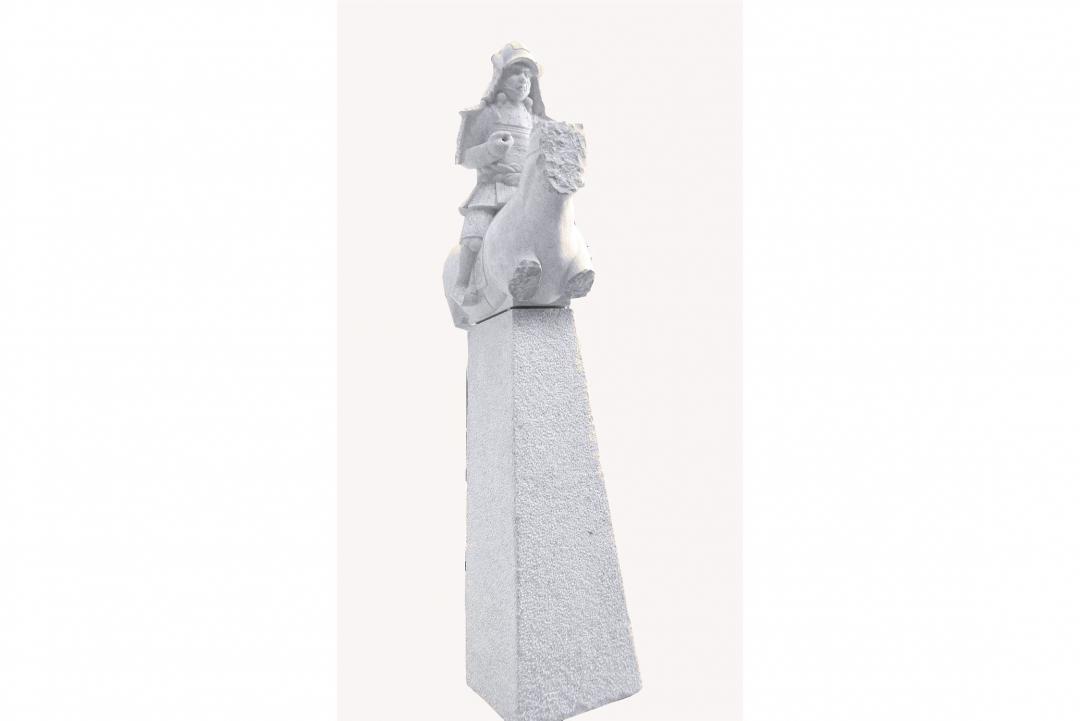Ii’s Red Devils. Ii Naomasa (1561 – 1602)

The youngest of the Tokugawa Shitenno* and 19 years younger than Tokugawa Ieyasu, Ii Naomasa led the most elite unit, the vanguard, of the Tokugawa Army, and dressed his men in bright red armor known as Ii Red. Their baptism of fire was at the Battle of Komaki Nagakute (modern-day Komaki City and Nagakute City, Aichi Prefecture among others) in 1584 against Hashiba (Toyotomi) Hideyoshi. In this battle, the 24-year-old general Ii Naomasa and his troops took their place at the head of the Tokugawa army, then stormed the enemy front lines! The fearsome sight of a wall of red armored samurai crashing down on them put fear into the enemy, and they became widely known as Ii’s Red Devils.
This statue represents Naomasa displaying his resolute daring.
*Shitenno, also known as the “Four Heavenly Kings”, were the four loyal generals who played a major role supporting Tokugawa Ieyasu’s efforts in the unification of Japan.
Okazaki Castle Outer Moat Enclosure >

Ii’s Red Devils. Ii Naomasa (1561 – 1602)
The youngest of the Tokugawa Shitenno* and 19 years younger than Tokugawa Ieyasu, Ii Naomasa led the most elite unit, the vanguard, of the Tokugawa Army, and dressed his men in bright red armor known as Ii Red. Their baptism of fire was at the Battle of Komaki Nagakute (modern-day Komaki City and Nagakute City, Aichi Prefecture among others) in 1584 against Hashiba (Toyotomi) Hideyoshi. In this battle, the 24-year-old general Ii Naomasa and his troops took their place at the head of the Tokugawa army, then stormed the enemy front lines! The fearsome sight of a wall of red armored samurai crashing down on them put fear into the enemy, and they became widely known as Ii’s Red Devils.
This statue represents Naomasa displaying his resolute daring.
*Shitenno, also known as the “Four Heavenly Kings”, were the four loyal generals who played a major role supporting Tokugawa Ieyasu’s efforts in the unification of Japan.
